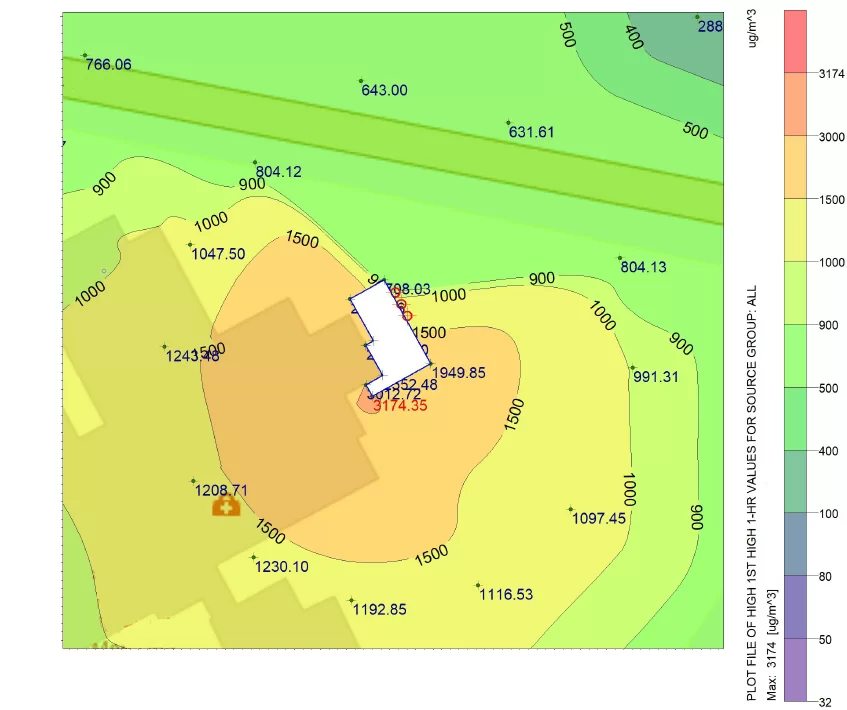The Project: Air Re-Entrainment Analysis
📍Confidential
The Challenge
Growth and Demand Requires More Emergency Power
EARTHRES was contracted by a Medical Care Facility to conduct an air re-entrainment analysis for their facility. In order for the Facility’s emergency power system to keep up with growth and demand, the Client proposed to install two (2) identical emergency generators in a new building with room for a third generator to be installed at a later date.
An analysis was needed to evaluate the placement of air intakes and exhausts associated with the proposed generator plant and whether generator plant exhaust air may contribute to re-entrainment into fresh air intakes.
Impact to Sensitive Patient Populations
While this analysis was not required to demonstrate environmental and/or regulatory compliance, the Client wanted to address public or patient concerns considering the sensitive population associated with the Facility.
The Solution
Use Site-Specific Data with a Complete and Powerful, State-of-the Science AERMOD Air Dispersion Modeling Assessment
EARTHRES performed air dispersion modeling using the U.S. EPA AERMOD Model (via Lakes Environmental AERMOD View™ software) for the proposed generator installation project. This highly specific model requires site-specific parameters to be identified and entered into the model including the following:
-
- source information (source type, stack dimensions, emission rates, etc.),
-
- building information (dimensions and stack locations),
-
- building downwash (aerodynamic turbulence induced by adjacent / nearby buildings),
-
- local meteorological data, and
-
- sensitive receptor information (locations of nearby schools, etc.).
Comparison with Standards and Thresholds
EARTHRES compared the AERMOD Model results (emission rates, concentrations, and associated plume geometry) to the National Ambient Air Quality Standards (NAAQS), Pennsylvania Ambient Air Quality Standards (PAAQS), and human olfactory detectable odor thresholds. Based on the AERMOD Model emission concentrations and proposed plant design, the re-entrainment of generator exhaust air from the proposed project into fresh air intakes had the potential to cause slight-to-moderate impacts to sensitive populations.

Design to Control the Outcome and Keep the Patients Safe
Based on the results, EARTHRES recommended installing a control device (selective catalytic reduction (SCR), or other control device(s)), implementing operational controls (limit testing and maintenance to certain non-peak hours), and/or considering other plant design modifications (increased stack height, placement of fresh air intakes upwind of the maximum concentrations observed, etc.) in order to reduce actual air quality impacts to sensitive populations.
In order to reduce potential emissions and/or nuisance odors, the Facility has since proposed adding oxidation catalysts to the emergency generators, as recommended by EARTHRES.
The Results
Prevented detrimental effects to sensitive patient populations by reducing emissions and nuisance odors.


